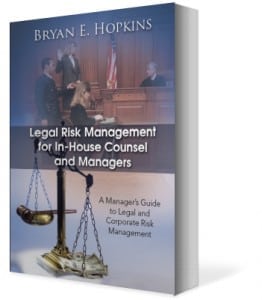 Recently, Korea has added new updates to its privacy laws, including the amended version of the Network Act (the “Amended Network Act”) and the amended version of its personal data privacy law- the PIPA (the “Amended PIPA”) . Both the Amended PIPA and the Amended Network Acts (collectively “Amended Acts”) contain a number of far-reaching amendments that raise the overall level of regulatory requirements applicable to information and communication service providers (“ICSPs”) and data processors. (more…)
Recently, Korea has added new updates to its privacy laws, including the amended version of the Network Act (the “Amended Network Act”) and the amended version of its personal data privacy law- the PIPA (the “Amended PIPA”) . Both the Amended PIPA and the Amended Network Acts (collectively “Amended Acts”) contain a number of far-reaching amendments that raise the overall level of regulatory requirements applicable to information and communication service providers (“ICSPs”) and data processors. (more…)
 Product liability risk is one of the most serious issues facing manufacturers today. Failure to mitigate or transfer product liability risk can result in massive law suits (including class actions), investigations, recalls and fines. Companies that fail to consider product liability risk when manufacturing products may be forced to close their doors if they fail to address the seriousness of product liability litigation, especially in the US. (more…)
Product liability risk is one of the most serious issues facing manufacturers today. Failure to mitigate or transfer product liability risk can result in massive law suits (including class actions), investigations, recalls and fines. Companies that fail to consider product liability risk when manufacturing products may be forced to close their doors if they fail to address the seriousness of product liability litigation, especially in the US. (more…)
 Organizations always hope for sunny skies and calm seas when conducting business. No one wants to be unpleasantly surprised nor exposed to rough weather, especially if such weather causes a person or an organizations' reputation, financial well being or its very existence to be threatened. However, in the past decade, due to many well publicized scandals involving companies, officers and directors, the study and implementation of risk management has become popular. People are discussing risk management more than ever. (more…)
Organizations always hope for sunny skies and calm seas when conducting business. No one wants to be unpleasantly surprised nor exposed to rough weather, especially if such weather causes a person or an organizations' reputation, financial well being or its very existence to be threatened. However, in the past decade, due to many well publicized scandals involving companies, officers and directors, the study and implementation of risk management has become popular. People are discussing risk management more than ever. (more…)
 Despite the recent emphasis by many countries on data privacy, data privacy issues have only gotten worse. What the world is currently experiencing is the explosion of data (Big Data) as well as a breakdown in data privacy safeguards due to risk issues as well as increased technology making data privacy much harder to control. (more…)
Despite the recent emphasis by many countries on data privacy, data privacy issues have only gotten worse. What the world is currently experiencing is the explosion of data (Big Data) as well as a breakdown in data privacy safeguards due to risk issues as well as increased technology making data privacy much harder to control. (more…)
 The other day I was caught in a sudden downpour. It was raining harder in Seoul than I’ve seen it rain in a long time. It was if the rain was washing away all the dirt and grime, a real spring cleaning. Looking at the rain it reminded me that sometimes we need to wash our risk management processes to. Or at least re-examine them. (more…)
The other day I was caught in a sudden downpour. It was raining harder in Seoul than I’ve seen it rain in a long time. It was if the rain was washing away all the dirt and grime, a real spring cleaning. Looking at the rain it reminded me that sometimes we need to wash our risk management processes to. Or at least re-examine them. (more…)
One of the least appreciated but easy to use tools to manage and control legal risk are checklists. I like to use checklists on a regular basis in many departments as checklists bring to focus only risks that have been encountered in the past but can be tailored for a particular industry or sector or business division.
What are checklists? Checklists are a list of topics, questions or items normally derived from the risks encountered previously that provide a convenient means to rapidly and easily identify possible risk. They take the form of either a series of questions or a list of topics or items to do or to be considered. Organizations may generate checklists for themselves or make use of standard checklists available from their particular industry or business sector. The nice part about checklists is that they are easy to create (once you know the right questions to ask) and use as a method of deducing risk.
For example, if you are in a manufacturing company which designs products, would you have a checklist about the safety steps that should be followed instead of trying to reinvent the wheel by figuring out what potential safety issues exist
What if you are drafting the warning and labels for products your company is manufacturing? Wouldn’t a checklist of questions help in the drafting. As you can see from the checklist below, once you understand the industry and business sector, the right questions to ask or items to list are a great help in managing legal or business risk. The checklist could look something like this:
As you can see, checklists are quite handy. I use them often when counseling clients on risk. Use them on a regular basis if you can.